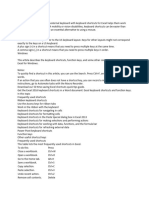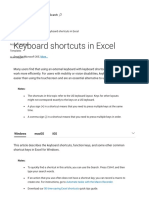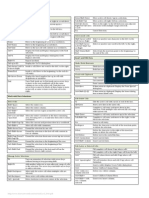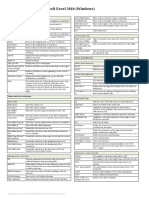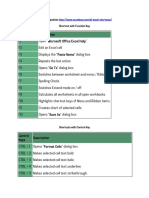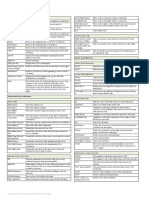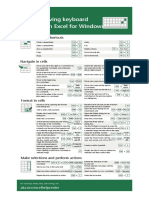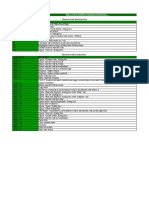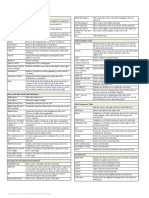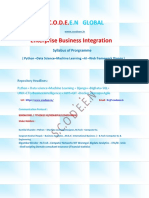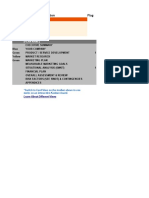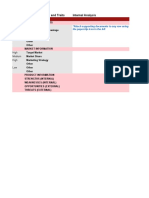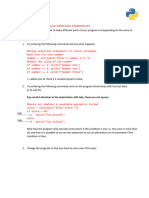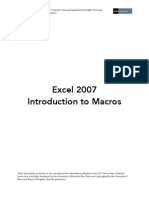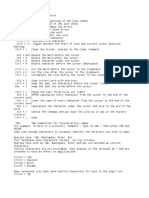0% found this document useful (0 votes)
168 views14 pagesRibbon Keyboard Shortcuts: To Do This Press
This document provides shortcuts for navigating and formatting in Excel. It lists shortcuts for common tasks like closing workbooks, copying/pasting, bolding text, navigating tabs, and more. Keyboard shortcuts allow for faster navigation and formatting in Excel compared to using the mouse and ribbon. The Alt key is important for accessing ribbon tabs and options through "key tips". Arrow keys can move between cells or select formatting options from a drop-down. Understanding shortcuts helps improve efficiency when using Excel.
Uploaded by
AbhijitCopyright
© © All Rights Reserved
We take content rights seriously. If you suspect this is your content, claim it here.
Available Formats
Download as DOCX, PDF, TXT or read online on Scribd
0% found this document useful (0 votes)
168 views14 pagesRibbon Keyboard Shortcuts: To Do This Press
This document provides shortcuts for navigating and formatting in Excel. It lists shortcuts for common tasks like closing workbooks, copying/pasting, bolding text, navigating tabs, and more. Keyboard shortcuts allow for faster navigation and formatting in Excel compared to using the mouse and ribbon. The Alt key is important for accessing ribbon tabs and options through "key tips". Arrow keys can move between cells or select formatting options from a drop-down. Understanding shortcuts helps improve efficiency when using Excel.
Uploaded by
AbhijitCopyright
© © All Rights Reserved
We take content rights seriously. If you suspect this is your content, claim it here.
Available Formats
Download as DOCX, PDF, TXT or read online on Scribd
/ 14


